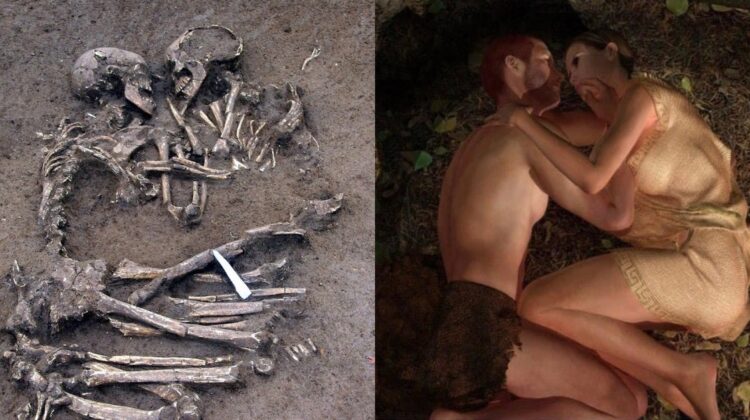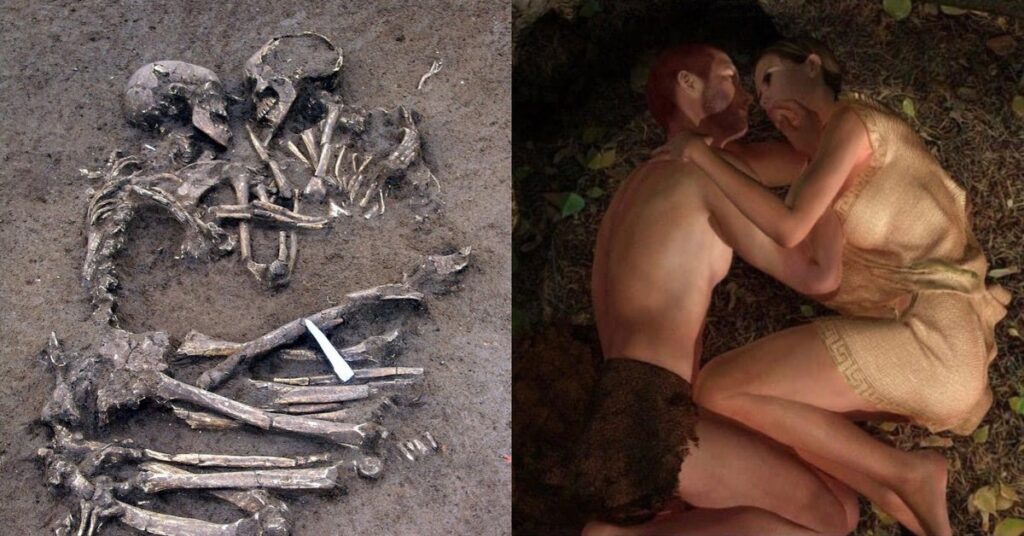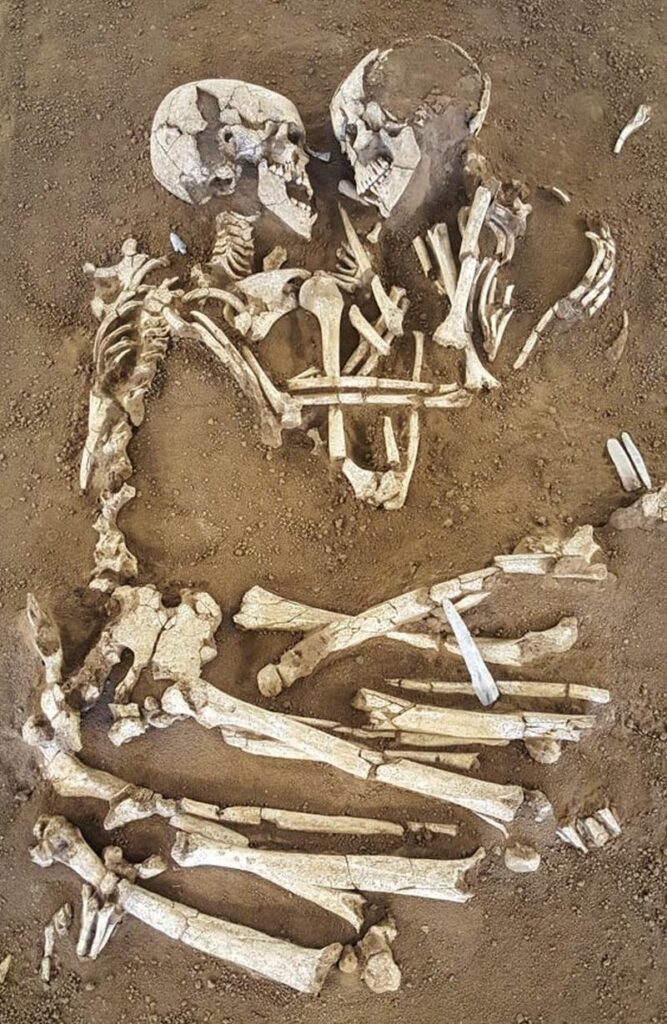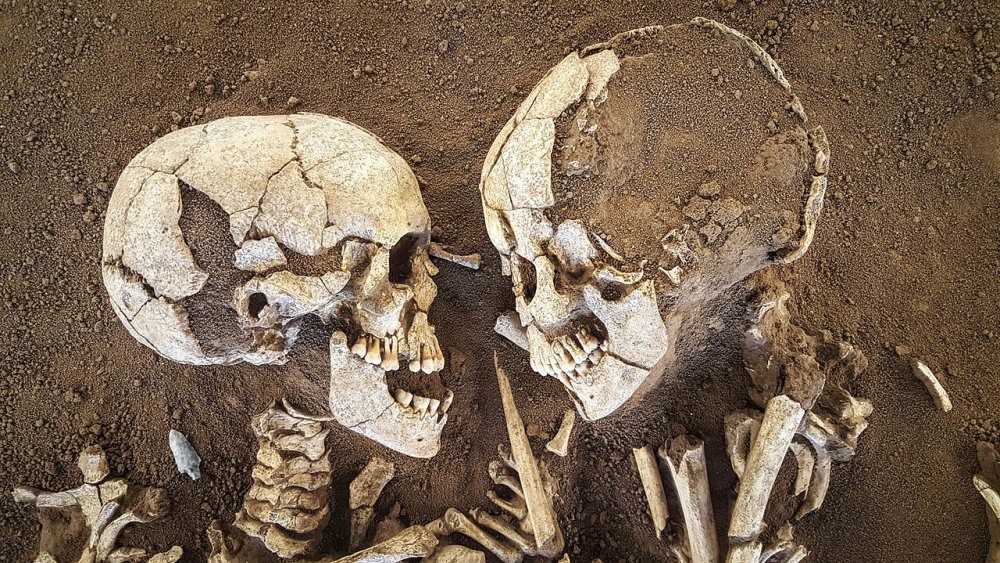
In 2007, just before Valentine’s Day, a team of archaeologists uncovered a Neolithic burial site in Valdaro, Italy. Among the 30 sites found was a double burial containing the skeletons of a male and a female. What made this discovery remarkable was the position of the skeletons. The two were found locked in an embrace that has lasted for the past 6,000 years, making them the Neolithic Romeo and Juliet.
The couple, who were no more than 20 years old, were buried with flint tools. A flint arrowhead was found near the male skeleton’s neck, and the female had a long flint blade along the thigh and two flint knives under the pelvis. However, there was no evidence of violent death, so the flint tools were likely burial objects.

Double burials were uncommon during the Neolithic period, which makes the Valdaro Lovers’ position unique. The scientists believe that they were purposely positioned that way, which is why their discovery created a lot of excitement worldwide. Although the skeletons were found only ten years ago, it is difficult to define anything about them so quickly, according to archaeologist Elena Maria Menotti, who led the excavation. Each bone will have to be studied thoroughly to get a better understanding of the couple.

One thing is certain: it’s unusual for two young people to have died at the same time and be buried this way. Many have speculated that the couple were star-crossed lovers who died in each other’s arms. The city of Mantua, near where the burial site was found, is the same city where Romeo was sent in Shakespeare’s play after killing Tybalt in a swordfight. It’s possible that the Valdaro Lovers were the inspiration for Shakespeare’s iconic story.


Luca Bondioli, an anthropologist at Rome’s National Prehistoric and Ethnographic Museum, said in an interview, “It’s rare for two young people to die at the same time, and that makes us want to know why and who they were, but it will be very difficult to find out.” Nevertheless, the Valdaro Lovers’ discovery remains a remarkable find, and their eternal embrace is a testament to the power of love, even 6,000 years later.

Discovered in 2007 and inspired Shakespeare? Really?
the burial site was discovered in 2007 but perhaps the lovers’ story was well-known in Shakespear’s time and earlier. The truth has been lost or forgotten over time.